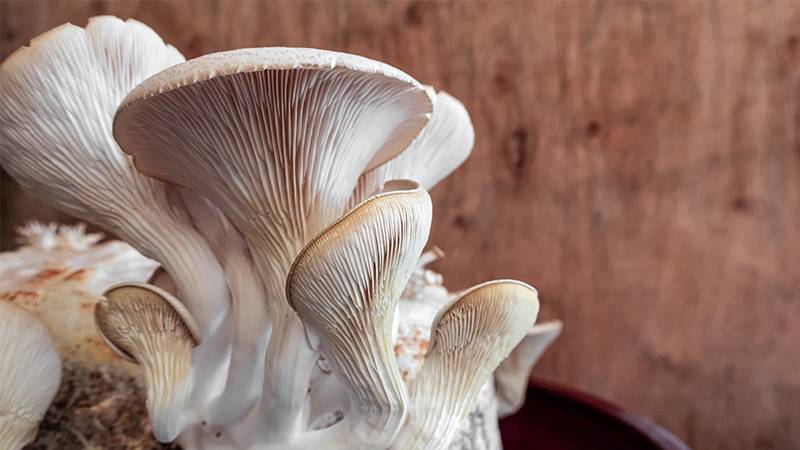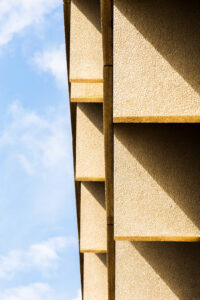
Nature’s Solution to Construction’s Environmental Issues: Living Building Materials
The construction industry has often taken heat for its impact on the environment and on climate change. It is an industry known for its negative contribution to landfills, and for its air, water and noise pollution. But newly developed living building materials could see the construction field as a leader in the fight against global warming and toxic wastes.
for its negative contribution to landfills, and for its air, water and noise pollution. But newly developed living building materials could see the construction field as a leader in the fight against global warming and toxic wastes.
Living building materials, also called sustainable building materials, are increasingly being used in construction because they don’t harm the planet and can help to contribute to a net-zero future. They are actually engineered materials made up of living cells that can control the materials postproduction. These cells include those of fungi, bacteria and plants, or a combination of these elements.
Living building materials are not to be confused with natural building materials, the latter of which is composed of plant material that is already dead. For example, while wood is a natural building material, it is not an alive tree. Living building materials, on the other hand, continue to provide biological functions post construction. This means they’re able to adapt to fluctuations in the environment and can therefore change shape, heal cracks, reduce environmental impacts, and harvest energy to be reused later. And because living building materials are sustainable – unlike many smart materials – they don’t tax the environment. They also result in less waste because they resist corrosion and have the ability to repair themselves. In addition, there is the ability to adapt existing buildings with living materials, such as infusing bacteria into existing concrete so that it is able to heal cracks and other issues.
Types of Living Building Materials
 Living Building Materials research involves coming up with alternatives to fossil-fuel-based materials that require resource intensive manufacturing processes and replace them with materials that are essentially alive. This will reduce pollution levels, slash carbon emissions, and lessen the impact on local ecosystems since living building materials can be grown in laboratories. Once a building is constructed with living building materials, it can grow and heal itself and absorb toxins in the air. Nature provides the opportunities to create living building materials via three main sources: Fungi, bacteria and plants.
Living Building Materials research involves coming up with alternatives to fossil-fuel-based materials that require resource intensive manufacturing processes and replace them with materials that are essentially alive. This will reduce pollution levels, slash carbon emissions, and lessen the impact on local ecosystems since living building materials can be grown in laboratories. Once a building is constructed with living building materials, it can grow and heal itself and absorb toxins in the air. Nature provides the opportunities to create living building materials via three main sources: Fungi, bacteria and plants.
Mycelium is a type of living building material made up of network-like structures of fungus that can fuse and become one solid material that grows in size. Once it has reached the desired consistency and size, it can be fully dried or partially dried that can then be combined with agro-industrial waste like husks, bagasse, seeds or peels and then 3D printed or poured into molds.
There are several advantages to using mycelium-based materials over traditional materials. For one thing, mycelium-based materials are lightweight and durable, and are mold and fire-resistant. In addition, mycelium-based materials are a great alternative to fossil-fuel-based form insulation because they have high acoustic absorption, are fire resistant, and have low thermal conductivity. They are also hypoallergenic and do not emit toxins, making them safe for human exposure. Also, mycelium-based materials are carbon negative and biodegradable, meaning that at the end of their lifestyle, it can be composted.
What makes mycelium particularly appealing is that it constantly looks for waste products, so pollutants such as oil, plastic, metals and cement are converted into nutrients for the environment. It has also been used to clean up toxic sites and soils. In addition, the production of mycelium-based building materials requires minimal energy and water, so it is a highly sustainable method of creating building materials that are biodegradable with less environmental impact.
Bacteria can also be used as a base for living building materials in the production of self-healing and self-growing concrete. Traditional concrete has high compressive strength, but it is also one of the most environmentally hazardous resources, contributing to eight percent of the world’s carbon emissions. Cement is also prone to cracking in damp environments. Self-healing and self-growing concrete, on the other hand, uses non-harmful bacteria to seal cracks and grow so that structures are protected from water damage. It is able to do this because the bacteria lie dormant until exposed to water that can seep through concrete when cracked. The water seepage awakens the bacteria which then consumes the calcium in the concrete and produces limestone that then seals the cracks. This can extend the lifetime of buildings.
Another product that uses harmless bacteria is biomason that uses a biomimetic process inspired by coral’s growth properties. Biomason does this by using sand that is injected with microorganisms and then poured into brick molds. The bacteria then wrap around each grain of sand and grows a calcium-carbonate coating through nutrients that they are fed. Within 72 hours, the calcium carbonate bonds are strengthened and the bricks fuse. While the bacteria remain alive, it is in a dormant state that can be reactivated if necessary. Biomason also does not require high temperatures and fossil fuels during production, so it is a sustainable alternative to traditional concrete.
Plant-based living building materials made up of soil and seed composites can create buildings that bloom. These small structures are 3D-printed and once molded, the seeds germinate and transform the soil-based walls into sprouting green facades whose roots form networks that provide structural support. When flora is incorporated into the building process, these extruded forms can absorb carbon dioxide. Should the building reach a point where it no longer is needed or no longer serves a purpose, the material can be recycled as organic compost. Plant-based living building materials, however, are relatively new and still need more research and development to refine its weather-resistant durability.
The Future of Living Building Materials
It’s no secret that construction is one of the biggest contributors to pollution and its impact on the environment and climate change. But living building materials present a growing opportunity for the industry to be a leader in the future of more sustainable projects. Living building materials are groundbreaking and innovative, with much research still being conducted. However, they promise to revolutionize the way construction is done moving forward, and the impact will be far reaching.
[/vc_column_text][/vc_column][/vc_row]